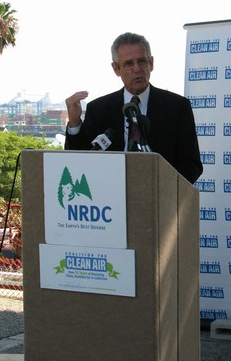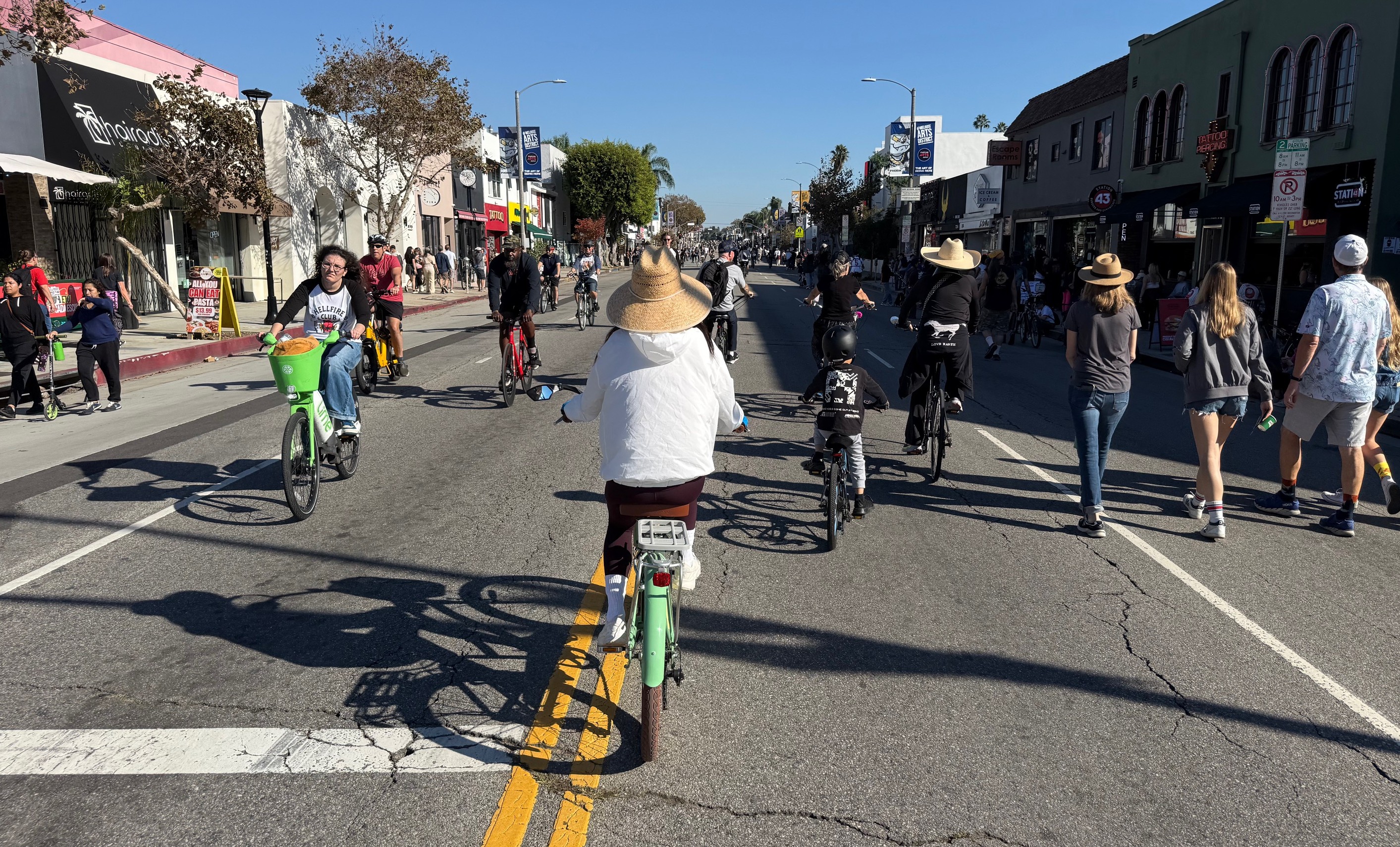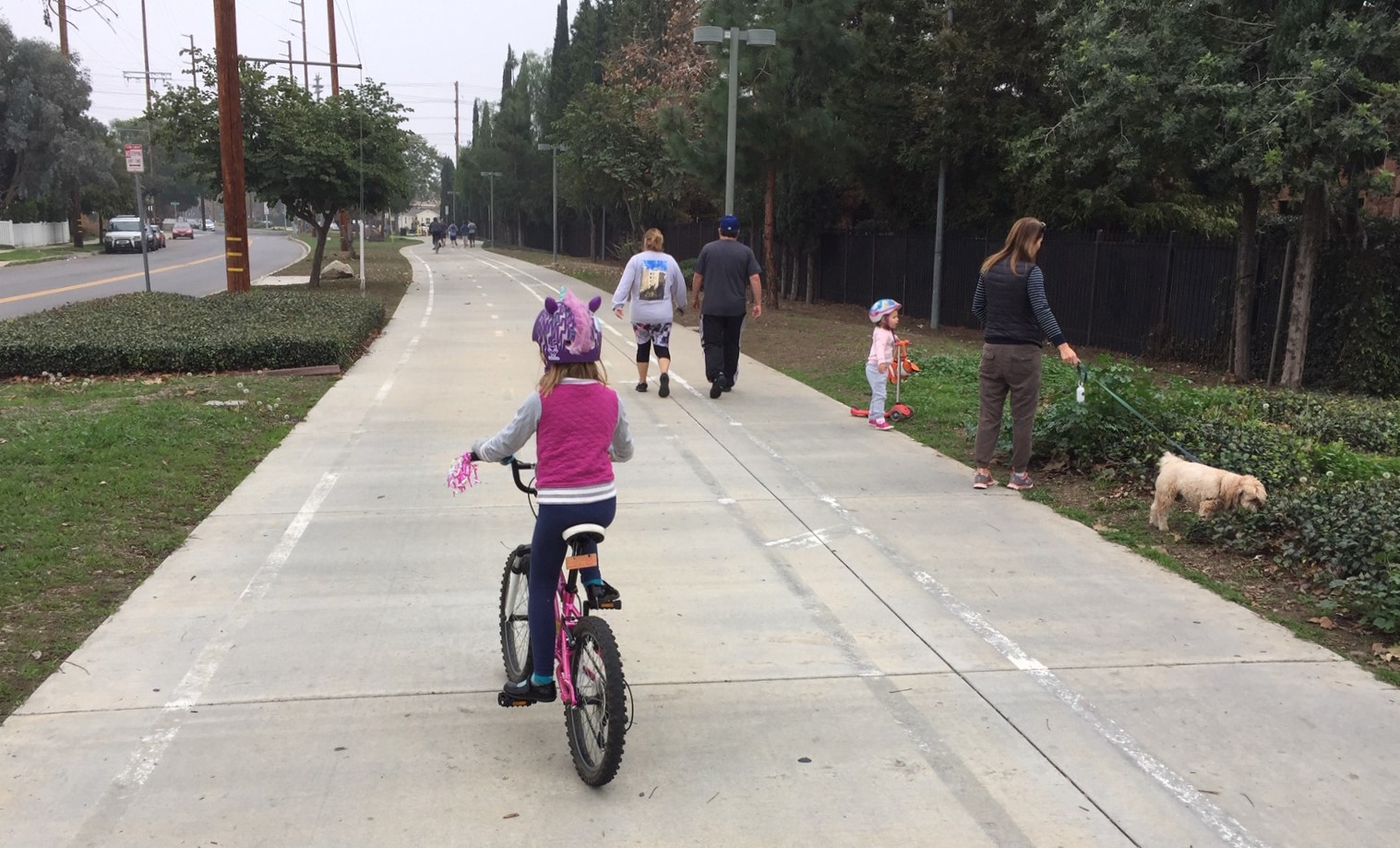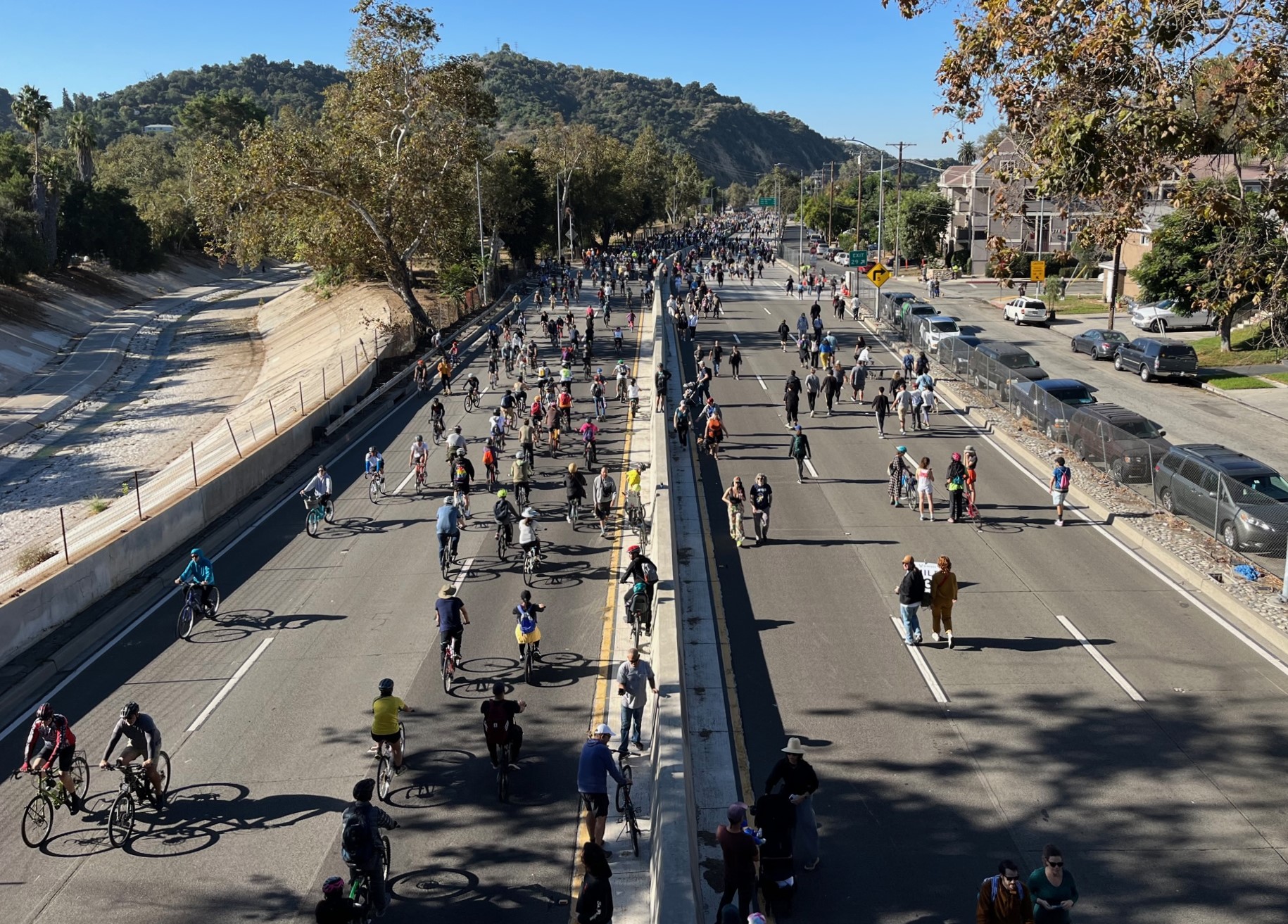
Last week, Senator Alan Lowenthal (D-Long Beach) introduced S.B. 910, which seeks to define what a "safe distance" is for a motorist to pass a cyclist. While the language of the bill may seem innocuous at first read, Lowenthal's staff says the current draft of the bill is a placeholder for what will most likely become a "3-Feet Passing Law."
Given the trouble some "safe streets" legislation has faced in Sacramento, the passage of a 3 Feet Passing Law might seem a difficult task. In 2006, a similar law died in committee after an intense lobbying efforts by the California Highway Patrol and the trucking industry. The CHP's opposition came in the form of "expert testimony" as it did when they all-but-killed legislation in 2009 that would have helped reduce speed limits on local streets.
But S.B. 910 should have some powerful local backers. "Give Me 3" posters still adorn bus stops around Los Angeles, part of the public service poster contest hosted last year by the LAPD, Mayor's Office, LACBC and Midnight Ridazz. At the press conference announcing the poster design, Mayor Antonio Villaraigosa said of a 3-Feet Passing Law, “We’ll keep at it until it becomes part of the California Vehicle Code.”
Despite some high profile support, S.B. 910 isn't quite ready to go through the hearing process. A close reading of the current draft of the legislation will show that the words "3 feet" don't appear anywhere in the text. John Casey, the Chief of Staff for Senator Lowenthal and a bike commuter himself, explains that the Senator's intent is to work with bicycle advocacy groups and law enforcement to make sure that the final draft is a bill that will work for cyclists, and motorists throughout California. Sixteen other states have laws that require motorists to give a three foot berth when passing a cyclist.
“We want to start looking at those states and see what works and what doesn’t so we can craft the tightest law we can for California,” explains Casey.
The introduction of this legislation is seen as a key moment by some in the bicycle community. "Los Angeles County Bicycle Coalition (LACBC) is pleased that Senator Lowenthal is sponsoring this bill." explains Alexis Lantz, LACBC's policy director, "He's the ideal person to carry this bill forward, especially since he represents Long Beach, which we all know is trying to become the most bicycle friendly city in America. LACBC has been working with the California Bicycle Coalition (CBC) and the Mayor's office on seeing this bill move forward."
One of the complaints about a three-feet passing law is that it creates a standard that is difficult for the police to enforce. For example, one never hears of police setting up a "passing law sting" as they do speed traps or crosswalk stings. However, the law does give police, and prosecutors, a specific charge when vehicles clip cyclists or force them off the road while passing. Even if the police aren't measuring the passing distance between cars and bikes when no collision occurs, the law could give cyclists a new legal leg to stand on when forced off their bikes by passing cars even when there's no actual collision.
Mihai Peteu, a Board Member for Bikeside and Santa Monica Spokes, sees the benefit of the law as both an enforcement issue and a statement about the importance of bicycling safety. "Right now the current mindset in Southern California dehumanizes cyclists and places almost no accountability on motorists that injure, maim, and kill. A three-feet passing law would be a small but symbolic step in the correct direction."
The website 3 Feet Please has been monitoring the national movement to bring this law to every state. It helpfully provides a policy paper from the Bicycle Alliance of Washington (the state), which covers the local issues and provides guidance for activists with similar goals in other states. For example, they show that a 3 Feet Passing Law is effective as an educational tool.
We have spoken to state patrol officials in several of the 11 states that have passed the three-feet law. Those officials emphasize that the law is used more as an education tool to provide safe practices than as an enforcement tool to punish law breakers. It gives officers, government officials, and civic groups the opportunity to inform drivers what a safe minimum distance is by use of a common measure (3 feet or one yard) that can be easily remembered.
Meanwhile, the LACBC and CBC are looking for more comprehensive reforms than just a passing law. "We feel the 3' Passing Law will be a good step forward at the state level to help prevent collisions, provide a driver education tool and help facilitate better enforcement in regards to sharing the roads. Some of the draft language that the CBC has been working on includes language to possibly further clarify CVC 21202 - we hope some of that language will remain in addition to addressing safe passing distance," explains Lantz. "We will continue working with the CBC, Senator Lowenthal and the Mayor's office to build support in Los Angeles County and around the state for the passing of this bill."







